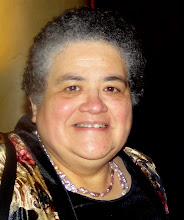 Winter in Exeter, Rhode Island
Winter in Exeter, Rhode IslandI am always excited at the beginning of the new semester. New classes, new students; I have spent a good deal of time updating things and tweaking others in my Introduction, as well as redesigning my upper division class, so starting the new term is like diving into a maelstrom. You have to swim and yet know that you will be carried along; there are lots of things over which you have no control.
For the first few weeks, the student count is somewhat unstable. Some students, particularly seniors, show off how cool they are by skipping the first week of school. Sorry, they say, they were on vacation in Aspen with their parents. You know they are lying but what can you do? I will not trust anything they say from that moment on. Then you have the shoppers; they try out a class, don’t like it and then come asking for permission to enroll in my class. Even in the second week, I let them in. It bothers me that they’ve missed the introduction and foundation to the course but they’ll just have to catch up. Sometimes I get polite notes from students who were there for one or two classes and decide to move on to something else. I appreciate the notes and I don’t mind that they left; smaller classes are better. They are more manageable, cozier, and there is less grading to do.
Throughout my career, I have let in most students who wanted to take the class, though I do cut it off after the first two weeks because they will have missed too much material beyond that point. We have “caps,” maximum numbers allotted to the class. Most of our lower division classes, in my case, my “Introduction to Latin American Civilizations,” are capped at 35 students; I usually have about 38 students in the class by the end of the semester. I sign permissions for up to 45 students sometimes (this semester, 43) because with all the shopping, dropouts, and other attrition, it settles down to about 38. I let so many students in because I remember, even forty years ago when I was an undergraduate, the frustration of many of my classmates at being unable to get the classes they needed for graduation inside of four years.
I never had that problem because I chose an obscure major, philosophy, and minored in classics, so I never had to beg a professor to let me into a class. All my classes had tiny enrollments except for general classes that fulfilled general education requirements, like “Physics for Non-Science majors.” I loved the professor, a slender, bearded young man, Clifton Albergotti, who made it all so interesting. We had a field trip to see the Stanford Linear Accelerator, now called the SLAC National Accelerator Laboratory, and we read a very cool non-physics book whose title I no longer remember, but I remember loving the class. We remember only the names of the professors we loved.
That’s the thing about classes like my Introduction; while there might be a history major or two in the class, most students are using it to fulfill a requirement, and I have to engage them. I want to grab every one of them and get them to fall in love with history, and some of them will. I pick the books that are captivating and that they will want to keep when the semester ends, or that they will pass on to their parents or their siblings. As it happens, I often get the younger siblings of former students.
This semester, my upper-division class (300-level) is called Latin American Women’s Lives Through Their Own Eyes. Enrollments were very slow, so that for a long time, I thought it would barely get enough students to make the minimum required enrollment. When it passed 15, I started to breathe easier. Then it passed 20, much to my astonishment. The cap is 30, and we have 21 students; not bad. There are eight men in the class. I am pleased about this; it used to be that a class focusing on women might get a man or two but that is changing slowly. I am glad I have lived long enough to see that change take place.
For me, the challenge is to figure out how to make the class a joy. I want them to go on with their lives, understanding the importance of having an understanding of history, and how the shenanigans of politicians and scoundrels turn into history. And if my class results in a few enthusiastic watchers of history programs on TV, or readers of popular history books, I’m happy.
And if they grow up to read the newspapers enthusiastically, with some understanding of what is going on in Latin America, I’ve done my job.
Winter on India Point, Providence, Rhode Island


No comments:
Post a Comment